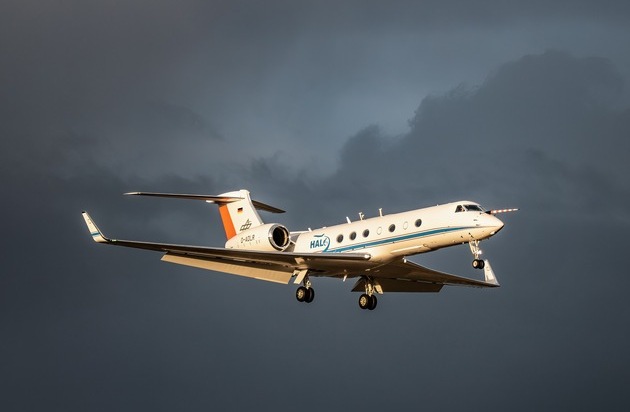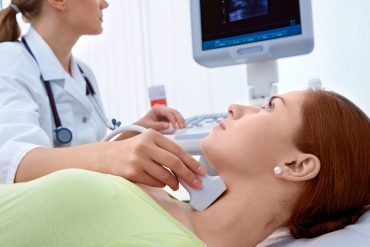University of Bremen
A Look at Methane: Research Flights to Canada with Bremen Partnership
Oil and gas exploration, coal mining, landfills, agriculture: all these sources release methane into the atmosphere. There are also large wetlands and thawing permafrost. How much do these sources contribute in detail? To be able to answer this question, the German research aircraft HALO has been operating over Canada for several weeks now. Researchers from the University of Bremen were also on board.
“Methane is considered one of the most important greenhouse gases in the Earth’s atmosphere, but its natural and man-made sources are still poorly understood,” said Dr. Heinrich Bowensmann from the Institute of Environmental Physics at the University of Bremen. To bring light into the darkness, the University of Bremen is involved in the CoMet 2.0 Arctic (Carbon Dioxide and Methane Mission for HALO) project. It is managed by the German Aerospace Center (DLR). Other partners are the Max Planck Institute for Biogeochemistry in Jena and the Ludwig Maximilian University of Munich. “Using Canada as an example, we want to more accurately and comprehensively record greenhouse gas emissions and use the data to improve climate forecasts,” says Bowensman, outlining the goal. doing.
Lots of methane from coal mines, landfills and oil sands
In August and September 2022, researchers from the University of Bremen successfully tested their novel instrument MAMAP2D Light for imaging methane from local sources. High concentrations of methane have been particularly characterized at open coal mines, landfills, and the Athabasca oil sands in the Rocky Mountains.
In addition to equipment from the University of Bremen, a lidar measuring instrument from the DLR, a hyperspectral instrument from the Ludwig Maximilian University in Munich and measuring instruments from the Max Planck Institute for Biogeochemistry in Jena were also on board. Measurements by the research aircraft HALO were supplemented with measurements by Canadian and US collaborators on the ground and in the air as part of an international collaboration. In the coming months there will now be a question of evaluation and analysis of the measurement data obtained.
about hello
The research aircraft HALO (High Altitude and Long Range) is a joint initiative of German research institutes. HALO is funded by grants from the Federal Ministry of Education and Research (BMBF), the German Research Foundation (DFG), the Helmholtz Association, the Max Planck Society (MPG), the Leibniz Association, the Free State of Bavaria, the Karlsruhe Institute. Technology (KIT), Research Center for Jülich and German Aerospace Center (DLR).
further information:
Answered questions:
Dr. Heinrich Bowensmann
Institute of Environmental Physics (IUP)
University of Bremen
Phone: +49 421 218-62102
E-mail: [email protected]
Universität Bremen Hochschulkommunikation und -marketing Telefon: +49 421 218-60150 E-Mail: [email protected] Über die Universität Bremen: Leistungsstark, vielfältig, reformbereit und kooperativ – das ist die Universität Bremen. Rund 23.000 Menschen lernen, lehren, forschen und arbeiten auf dem internationalen Campus. Ihr gemeinsames Ziel ist es, einen Beitrag für die Weiterentwicklung der Gesellschaft zu leisten. Mit gut 100 Studiengängen ist das Fächerangebot der Universität breit aufgestellt. Als eine der führenden europäischen Forschungsuniversitäten pflegt sie enge Kooperationen mit Universitäten und Forschungseinrichtungen weltweit. Gemeinsam mit neun jungen Universitäten und vier assoziierten Mitgliedern aus dem Hochschul-, Nichtregierungs- und privaten Bereich gestaltet die Universität Bremen in den nächsten Jahren eine der ersten Europäischen Universitäten. Das Netzwerk YUFE – Young Universities for the Future of Europe wird von der EU-Kommission gefördert. In der Region ist die Universität Bremen Teil der U Bremen Research Alliance. Die Kompetenz und Dynamik der Universität haben zahlreiche Unternehmen in den Technologiepark rund um den Campus gelockt. Dadurch ist ein bundesweit bedeutender Innovations-Standort entstanden – mit der Universität Bremen im Mittelpunkt.

Devoted web advocate. Bacon scholar. Internet lover. Passionate twitteraholic. Unable to type with boxing gloves on. Lifelong beer fanatic.






